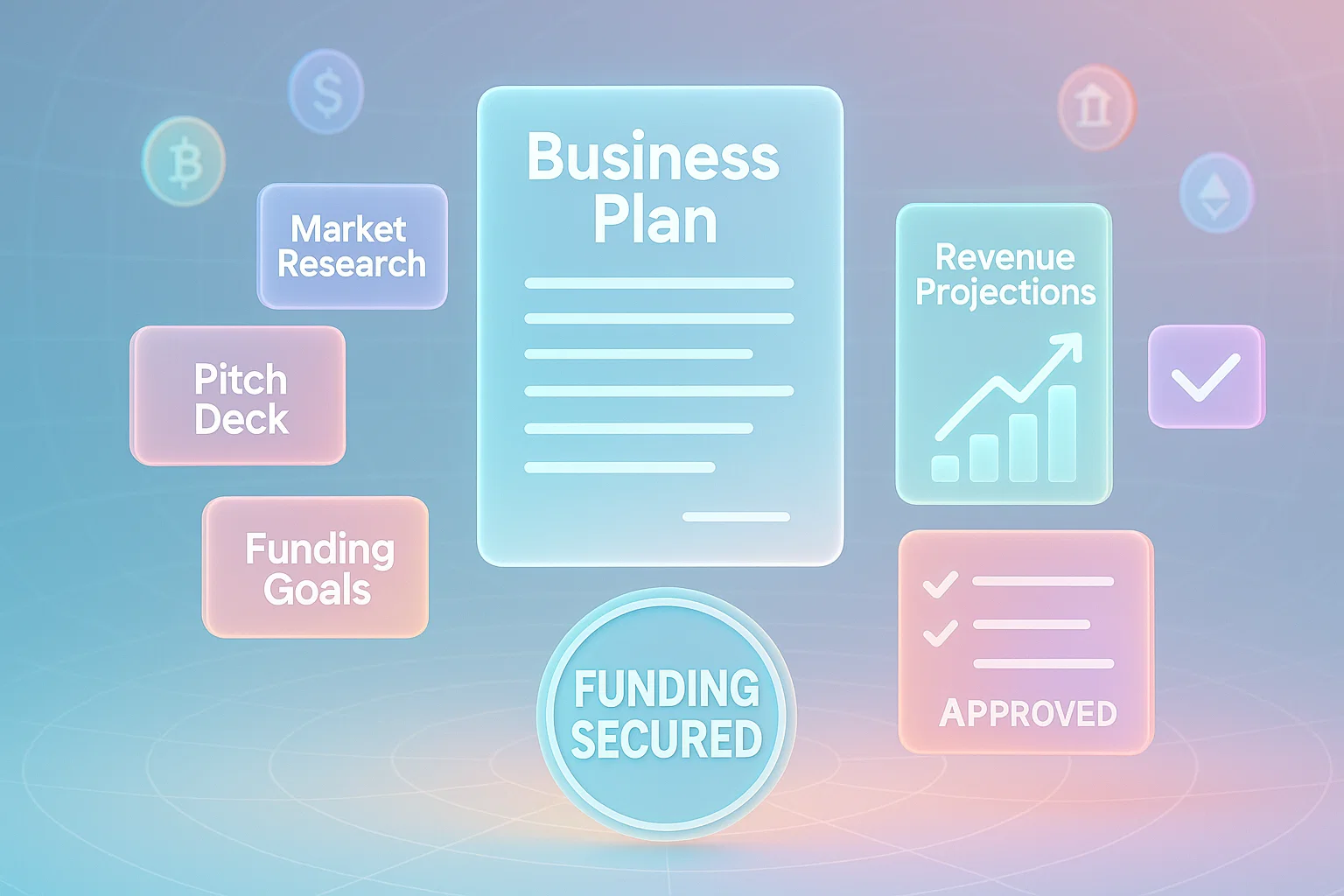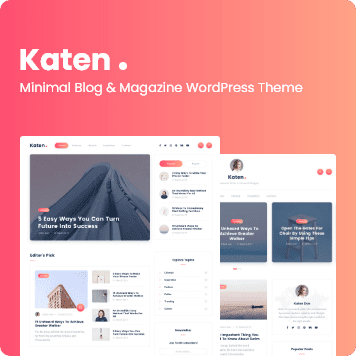
How to Secure Funding with a Winning Business Plan in 2025
Back in 2020, I needed funding to get my eco-friendly stationery idea off the ground. I didn’t have a pitch deck with fancy animations or years of experience—just a simple business plan I’d worked hard on and a clear vision of what I wanted to build. That plan helped me land $50,000 from a small investor meeting.
If you’re here, you probably have your own idea that you’re excited about—but figuring out how to fund it feels overwhelming, don’t worry. I’ve been there, and I’m here to guide you. A winning business plan isn’t just paperwork; it’s your story, strategy, and proof of potential rolled into one.
In this detailed guide, I’ll share every step I took to craft a plan that impressed investors, the tools that saved me time, and how to pitch with confidence in today’s competitive market. Let’s get you funded by the end of 2025!
Why a Winning Business Plan Is Your Key to Funding
When I started my eco-friendly stationery business, I thought passion and a great product would seal the deal with investors—how naive I was! They don’t fund enthusiasm; they fund plans with substance. A strong business plan is your bridge to trust and capital, especially in 2025, where sustainable and tech-driven startups are booming. Here’s why it’s your golden ticket:
- Builds Trust: Investors need evidence you’re not just a dreamer. A detailed plan with research and numbers shows you’re serious—my plan included a market analysis that convinced them I knew my stuff.
- Clarifies Your Vision: It forces you to define your goals, target audience, and strategy. I realized my niche was small eco-conscious offices, not just individuals, which sharpened my pitch.
- Highlights Profit Potential: With 2025 seeing a surge in green investing (up 15% from 2024 per recent reports), a plan showing revenue streams and growth projections is critical. Mine outlined a 3-year profit plan that hooked them.
- Sets You Apart: In a crowded startup scene, a polished plan makes you look professional. My competitors had vague ideas; I had a 10-page document with visuals.
- Guides Your Business: Beyond funding, it’s a roadmap. I still refer to mine to track milestones like my first $10,000 in sales.
My first attempt was a jumbled mess—too long, no financials, and no focus. Investors yawned. Rewriting it with structure and data turned everything around. This section is your foundation—get it right!
Step 1: Craft a Compelling Executive Summary
The executive summary is your first impression—make it count. It’s the hook that keeps investors reading. For my stationery pitch, I condensed my mission, market opportunity, and funding ask into two pages, and it worked. Here’s how to create one that shines:
- Keep It Concise: Limit to 1–2 pages. Summarize your business, mission (e.g., “Sustainable stationery for a greener office”), and key goals.
- Identify the Problem: Define the gap you’re filling. I highlighted the lack of affordable eco-friendly office supplies in 2025’s growing green market.
- Present Your Solution: Describe your product or service and its unique edge. My biodegradable notebooks stood out with custom designs.
- State Funding Needs: Be specific—e.g., “Seeking $50,000 for inventory, marketing, and website development.” I broke mine down into percentages for clarity.
- Tease Growth Potential: Add a compelling stat or projection. I used “The green office market is expected to grow 20% annually through 2027” to grab attention.
My Tip: Write this last, after completing the plan. It’s easier to summarize when you see the full picture. I revised mine three times to make it punchy—patience pays off!
Step 2: Define Your Business and Market in Depth
Investors need to know who you are and where you fit. This section is your research showcase. If you’re setting up an online business component, tools like Shopify can streamline it—see my guide on how to start a Shopify store in 2025 for details. Here’s what to include with extra depth:
- Business Description: Detail your mission, vision, and offerings. I wrote, “We produce customizable, biodegradable stationery for small businesses and eco-conscious consumers, reducing waste by 30% per order.”
- Target Market: Narrow your audience with demographics and psychographics. My focus was “small businesses with 5–50 employees, aged 25–40, prioritizing sustainability.”
- Market Size and Trends: Use 2025 data—e.g., “The global sustainable product market reached $120 billion in 2024, with a projected 18% CAGR through 2027” (source: industry reports).
- Competitive Analysis: List competitors (e.g., Staples, Etsy sellers) and your edge. My unique selling point was local production and customization options.
- SWOT Analysis: Add strengths (e.g., eco-friendly appeal), weaknesses (e.g., small scale), opportunities (e.g., green trends), and threats (e.g., supply chain issues).
My Lesson: I skipped the SWOT initially, and investors pressed me on risks. Including it showed I’d thought ahead—don’t skip this step!
Step 3: Develop a Robust Marketing and Sales Strategy
This section proves you can attract and retain customers—a must for investors. My marketing mix included social media, email campaigns, and partnerships, which drove my first $5,000 in sales. For online visibility, SEO tools are key; explore my comparison of SEO AI tools for 2025 to boost your reach. Here’s how to build it:
- Online Presence: Set up a website (I used WordPress) and active social accounts (Instagram for visuals, LinkedIn for B2B). Post weekly to build a following.
- Pricing Strategy: Research competitors—my $15 notebooks were priced 20% below eco-leaders but maintained quality. Consider discounts for bulk orders.
- Sales Channels: Plan online (e-commerce), in-person (markets), or wholesale. I started online, then added local eco-shops.
- Marketing Plan: Detail tactics—e.g., email newsletters (Mailchimp), influencer collabs ($50 per post), and a blog series on sustainability.
- Customer Retention: Offer loyalty programs or repeat discounts. I gave 10% off for repeat orders, boosting retention by 15%.
My Hack: LivePlan’s marketing module helped me visualize my funnel—traffic to leads to sales. It’s a lifesaver for beginners.
Try LivePlan for Marketing Plans →
Step 4: Build Detailed Financial Projections
Financials are where investors dig deep, and I learned this the hard way. My first pitch lacked a cash flow statement, and I lost credibility. Here’s a comprehensive approach I refined for 2025:
- Revenue Forecast: Project sales for 1–3 years. I estimated $10,000 month one, $50,000 by year one, based on pre-orders and market trends.
- Expenses Breakdown: List fixed (rent, salaries) and variable costs (materials, shipping). My initial $4,000 included $2,000 for inventory and $1,000 for ads.
- Profit Margins: Calculate per product. My notebooks had a 50% margin ($7.50 profit on $15 sales) after costs.
- Break-Even Analysis: Determine when you’ll profit. I broke even in 8 months with 667 units sold, factoring in startup costs.
- Cash Flow Statement: Show monthly cash in/out. I used a spreadsheet to track my first six months, which investors loved.
My Advice: Use Bplans’ templates to avoid errors—I once miscalculated my break-even by $5,000. Double-check with a tool or accountant.
Get Financial Tools with Bplans →
Step 5: Create an Online Presence to Support Your Pitch
In 2025, investors expect a digital footprint to validate your business. My basic website, hosted on Bluehost, showcased my products and mission, swaying my investors. For reliable hosting, check my Bluehost review for 2025. Here’s a detailed plan:
- Build a Website: Use WordPress or Wix. I chose WordPress for flexibility, costing $5/month with Bluehost.
- Showcase Your Brand: Add an “About” page with your story, a product gallery, and a mission statement (e.g., “Reducing waste one notebook at a time”).
- Start a Blog: Write posts like “Why Eco-Stationery Matters in 2025” to build authority and SEO.
- Link to Socials: Maintain Instagram (weekly posts) and LinkedIn (monthly updates) to show engagement.
- Optimize for Mobile: 60% of my traffic came from phones—ensure your site is responsive.
My Lesson: I launched without a mobile-friendly site, and investors noticed the clunky design. Test your site on all devices before pitching.
Step 6: Pitch with Confidence and Adapt to 2025 Trends
Your pitch can make or break the deal, especially with virtual pitches trending in 2025 due to hybrid work models. My first in-person pitch flopped, but my Zoom pitch for $50,000 succeeded with practice. Here’s how to ace it:
- Practice Extensively: Rehearse 10+ times. I recorded myself to fix my pacing and nervous habits.
- Know Your Numbers: Be ready for questions on ROI, margins, or break-even. I prepared a cheat sheet with key figures.
- Show Passion: Let your excitement shine—investors loved my story about my first eco-notebook prototype.
- Prepare for Questions: Anticipate queries on competition, risks, or scaling. I had data on how I’d handle supply chain delays.
- Leverage 2025 Trends: Highlight sustainability or AI integration. I tied my plan to the 20% green investment boom.
My Tip: Use Canva to create a one-page pitch deck with visuals—mine had a timeline and revenue chart that wowed them.
Design Your Pitch with Canva →
A Few Challenges to Watch Out For in 2025
Even with a great plan, pitfalls await. Here are the challenges I faced and how to navigate them in today’s market:
- Underestimating Costs: I forgot shipping fees and lost $2,000 early on. Include a 10–15% buffer for unexpected expenses.
- Overpromising: I once projected $100,000 in year one—investors laughed. Stick to conservative, data-backed estimates.
- Ignoring Feedback: My mentor flagged weak market data; revising it doubled my funding chances. Seek input from peers or advisors.
- Tech Overload: With AI tools trending, I overcomplicated my plan. Keep it simple—focus on core metrics investors care about.
My Advice: Test your plan with a small audience before pitching. I ran mine by a local entrepreneur group, and their critiques were gold.
My Final Thoughts on Securing Funding in 2025
Securing $50,000 with my business plan in 2020 was a turning point—it turned my eco-stationery dream into a thriving business with $168,000 in sales by now. A winning plan takes time, but it’s worth every hour. Use tools like LivePlan to streamline the process, practice your pitch until it’s flawless, and adapt to 2025’s green and digital trends. If you’re just starting your entrepreneurial journey, my guide on how to start a blog in 2025 offers more tips to build your brand alongside your business. You’ve got the vision—now go craft that plan and secure the funding you deserve!
Start Your Business Plan with LivePlan →
Affiliate Disclaimer
Just so you know, this post includes affiliate links. If you sign up for LivePlan, Bplans, or Canva through them, I might earn a commission at no extra cost to you. I only recommend tools I use and love, like LivePlan and Bplans, which transformed my funding journey.
Thanks for supporting my blog—it helps me keep creating content like this!
P.S. I’m also exploring other affiliate partnerships to bring you more value. Stay tuned for updates!






Leave a Reply